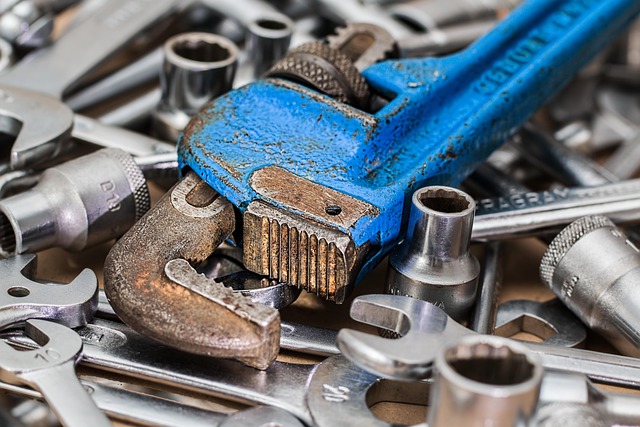What Is an Automatic Recirculation Valve? A Complete Beginner’s Guide

Strong 8k brings an ultra-HD IPTV experience to your living room and your pocket.
In many industries, pumps are one of the most important pieces of equipment. They move water, chemicals, oil, or other liquids from one place to another. If a pump stops working or gets damaged, the whole process can come to a halt.
One of the main reasons pumps get damaged is because they run at too low a flow rate. This means there is not enough liquid going through the pump. When that happens, the pump can overheat, vibrate too much, or even get permanently damaged.
To prevent this from happening, engineers use a special device called an Automatic Recirculation Valve (ARV). This device automatically keeps the pump safe, without anyone having to adjust it manually.
In this beginner‑friendly guide, we will explain:
What Automatic Recirculation Valves are
Why they are needed
How they work
Their benefits
Where they are used
How to choose the right one
1. What Is an Automatic Recirculation Valve?
An Automatic Recirculation Valve, often called an ARV or ARC Valve, is a special type of valve installed on the discharge side of a centrifugal pump.
Its main job is to protect the pump from running with too little flow. When the process does not need enough liquid, the ARV automatically sends some of the pump’s output back to the starting point (or another tank) so that the pump always has a minimum amount of flow going through it.
This means the pump never runs dry and stays safe from damage.
Think of it like a safety guard for your pump — always making sure it has enough work to do to stay healthy.
2. Why Are Automatic Recirculation Valves Needed?
Centrifugal pumps are designed to work best when there is enough liquid flowing through them. If the flow is too low:
- Heat builds up inside the pump, which can damage internal parts.
- Cavitation (tiny vapor bubbles) can form inside the pump and eat away at the impeller.
- Vibration increases, which wears out bearings and seals faster.
- Seal failure can lead to leaks and costly repairs.
In many industries, flow demand changes during the day. Sometimes pumps run at full capacity, and sometimes they don’t. Without an ARV, the pump could be damaged when flow is low.
Automatic Recirculation Valves solve this by:
- Detecting when flow drops too low
- Automatically opening a bypass path
- Sending some liquid back to the starting point to maintain safe flow
3. How Does an Automatic Recirculation Valve Work?
Even though ARVs work automatically, the idea is simple.
Normal Operation (High Flow)
- The pump is supplying enough liquid to the process.
- The ARV lets the liquid go directly to the process.
- The bypass line remains closed because it’s not needed.
Low Flow Condition
- The process needs less liquid than the pump is supplying.
- The ARV senses the low flow and automatically opens the bypass line.
- Part of the pump’s output is sent back to the source or tank.
Minimum Flow Protection
- This ensures the pump is always operating above its minimum safe flow rate.
- The pump stays cool, stable, and safe.
4. Main Parts of an Automatic Recirculation Valve
An ARV has a few important components:
- Main Valve Body – Directs flow to the process.
- Bypass Line – A smaller line that sends liquid back for recirculation.
- Spring Mechanism – Opens and closes the bypass automatically based on flow.
- Nozzle – Controls bypass flow speed and direction.
These parts work together without the need for electricity or manual adjustment.
5. Benefits of Automatic Recirculation Valves
Using an ARV has many advantages:
- Protects the pump automatically – No human intervention needed.
- Prevents overheating – Keeps pump temperature under control.
- Avoids cavitation – Reduces damage to impellers and pump casing.
- Extends pump life – Reduces wear and tear on seals, bearings, and impellers.
- Saves maintenance costs – Less breakdown means fewer repairs.
- Works without electricity – Operates purely on flow and pressure changes.
6. Applications of Automatic Recirculation Valves
ARVs are used in many industries where pumps handle varying amounts of liquid:
- Power Plants – Boiler feedwater pumps that must always have a safe flow.
- Oil & Gas – Protecting pipeline booster pumps.
- Chemical Plants – Handling acids, solvents, and process fluids.
- Refineries – Pumping crude oil or refined products.
- Water Treatment – High‑pressure pumps in filtration or desalination systems.
7. How to Choose the Right Automatic Recirculation Valve
When selecting an ARV, consider:
- Minimum Flow Requirement – How much flow your pump needs to stay safe.
- Operating Pressure – Choose a valve rated for your system pressure.
- Type of Liquid – Different designs for clean, corrosive, or abrasive liquids.
- Bypass Destination – Decide whether bypass flow returns to suction or goes to a storage tank.
- Size of Pump – Match ARV size to pump capacity.
8. Maintenance Tips for Automatic Recirculation Valves
ARVs require little maintenance, but you should:
- Check for leaks during routine inspections.
- Clean bypass nozzle if handling dirty liquids.
- Test valve movement during shutdown periods.
- Follow manufacturer recommendations for servicing.
Conclusion
Automatic Recirculation Valves are an essential safety device for protecting centrifugal pumps. They work automatically, do not need electricity, and ensure the pump always operates within safe limits.
Without an ARV, a pump running at low flow could quickly overheat, suffer from cavitation, and fail — leading to expensive downtime and repairs.
By installing a good quality Automatic Recirculation Valve, you:
- Extend pump life
- Reduce maintenance costs
- Keep operations running smoothly
If your pumps sometimes run at low flow, investing in an Automatic Recirculation Valve is one of the smartest and most cost‑effective decisions you can make for your plant.
Note: IndiBlogHub features both user-submitted and editorial content. We do not verify third-party contributions. Read our Disclaimer and Privacy Policyfor details.







